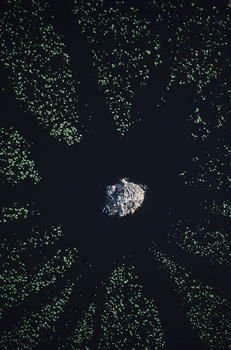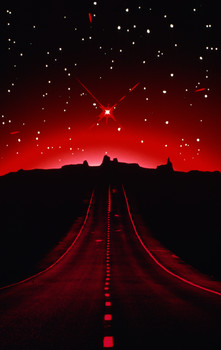'Killer Asteroid Slams into the Earth!' How Likely is This Headline?
by www.SixWise.com
Asteroids have hit the earth before. In 1908, an asteroid
landed in a remote part of Siberia with the force of a 15-megaton
nuclear bomb. Fortunately, the area was uninhabited and the
loss was limited to 60 million trees, rather than 60 million
lives.
And some 65 million years ago, an asteroid that landed near
what's now the Yucatan Peninsula in Mexico may very well have
caused the extinction of the dinosaurs ... Still, the idea
of one of these rocky fragments slamming into modern-day Earth
seems like something out of a sci-fi thriller.
|

NASA has numbered over 90,000 asteroids, and there
are about 1,100 in our inner solar system that are a
half-mile wide or more.
|
How likely is it that an asteroid could collide with the
Earth, causing unparalleled damage? Likely enough that the
International Astronomical Union has recently set up a special
task force to monitor asteroids, comets and other "near-Earth
objects" that are getting a little too close for comfort.
90,000 Numbered Asteroids
NASA says that there are over 90,000 numbered asteroids,
but the region in our solar system called the Asteroid Belt
probably contains millions. Most of these asteroids are actually
nothing more than leftover material from the formation of
the solar system 4.6 billion years ago.
The potential for a problem occurs when an asteroid gets
knocked out of the asteroid belt -- either from a collision
with another asteroid, Mars or Jupiter's gravity -- and into
the path of other planets, including Earth.
There are about 1,100 asteroids and comets in the inner solar
system that are a half-mile or more across, experts say, and
a collision with one of these could easily kill millions of
people.
"The goal is to discover these killer asteroids before
they discover us," said Nick Kaiser of the University
of Hawaii's Institute for Astronomy.
103 Objects on the "Impact Risk" Watch List
|

Scientists have given asteroid "99942 Apophis"
a 1-in-30,000 chance of colliding with Earth in 2036
with enough force to destroy New York City.
|
At the request of Congress, NASA is keeping an eye out for
dangerous objects in space, and is creating a catalogue of
the position, speed and course of distant objects, including
asteroids just 150 yards across, by 2020.
Experts estimate there are 100,000 of these objects out there
that could destroy a city or trigger a tsunami
if they hit Earth -- 103 of these are already on NASA's
"impact risk" watch list.
By compiling and expanding a database of potentially dangerous
objects in space, scientists hope to one day develop a permanent
warning system like those that monitor for tsunamis, volcanoes
and earthquakes.
What if a Killer Asteroid is Discovered?
Currently, there is no defense system set up to divert an
asteroid on a collision course with Earth.
"Right now, unfortunately, there are no 'asteroid busters'
or hot lines. Who ya gonna call?" said Andrea Milani
Comparetti of Italy's University of Pisa.
One day, though, experts are hoping to devise a plan to keep
Earth protected, such as sending a spacecraft out to nudge
a problematic asteroid into a different path or divert a dangerous
comet.
99942 Apophis
99942 Apophis is the most recent asteroid to have caught
the attention of scientists, who first gave it a 1-in-5,500
chance of colliding with Earth in 2036 with enough force to
destroy New York City.
However, the odds seem to have improved, with revised estimates
saying the chances of a collision are more like 1 in 30,000.
In 2029, scientists will be able to make a more precise measure,
as the asteroid will pass within 18,640 miles of Earth that
year (closer than the moon and many commercial satellites).
In the meantime, with the search for near-Earth objects increasing,
it's inevitable that more discoveries will be made.
"We're now going to be finding such objects once a week
instead of once a year," said David Morrison, a NASA
scientist who will chair the new task force.
While the monitoring has the potential to make the world
feel safer (and perhaps also instill some periods of panic,
necessary or otherwise), it may not be able to protect us
indefinitely from the awesome power of the universe.
"It's through collisions that planets are born,"
said Giovanni Valsecchi of Italy's National Institute of Astrophysics.
"And it's through collisions that planets die."
Recommended Reading
Tsunamis
are a Distinct Possibility for Both Coasts of the U.S.
When
(Not If, When) Will the Big Earthquake Hit the Midwest?
Sources
Seattle
Post-Intelligencer August 18, 2006
6abc.com
August 18, 2006
The
Seattle Times August 18, 2006
NASA's
Solar System Exploration